Lead Health Risk Reduction Project in Sovetskoe (Kan), Kyrgyzstan
Project dates: 2016-2018
Number of people at risk: 1,300 residents, including 350 children (329 families)
Source of pollution/contaminants: open tailing from a former lead factory
Project implementers: Civil Society Association “Ekois Bishkek”
Total cost: $80,000, the Project was funded by European Union, UNIDO, and Trust for Mutual Understanding
The project was implemented in 2016-2018 with financial and organizational support of Pure Earth/Blacksmith Institute by members of the Civil Society Association “Ekois Bishkek,” current EHPMI member organization.Project dates: 2016-2018Number of people at risk: 1,300 residents, including 350 children (329 families)Source of pollution/contaminants: open tailing from a former lead factoryProject implementers: Civil Society Association “Ekois Bishkek”Total…
The town of Sovetskoe (Kan) is located in Kyrgyzstan, in Batkensky Region, about 70 km west of the district center Kadamzhay, and 75 km north of the regional center Batken. Sovetskoe is situated in the foothills of the Alai Mountains at the altitude of 1100 – 1200 m.
The population of Sovetskoe is about 1,300 people. There are three public education and childcare institutions: kindergarten, school, and technical boarding school which are located in the western part of the town. About 350 children attend these institutions.
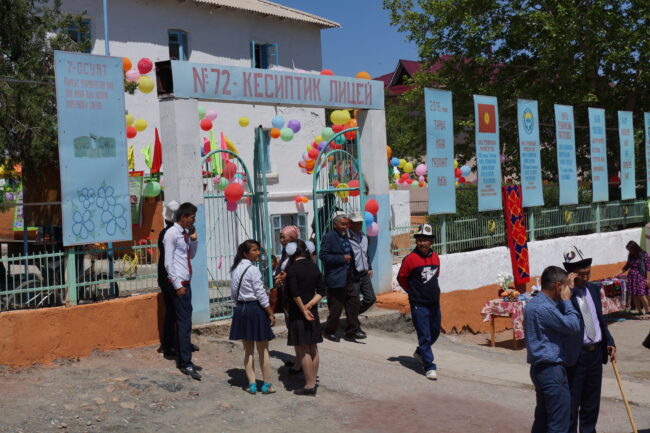
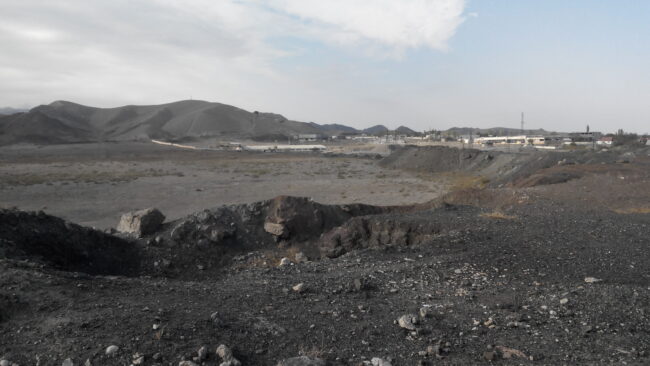
The Adrasman lead and zinc factory was built in Sovetskoe in 1950, and operated continuously until 1971. Lead and zinc ores were produced from open mines and refined at the factory. The ore processing facility functioned in the southeastern part of the town. The tailings containing ore processing wastes are located near the eastern part of Sovetskoe. The area of tailings is about 11 hectares. The volume of stored materials is about 2.8 million cubic meters.
Open mining and processing of lead and zinc ores in the village led to the disruption of the natural landscape. It caused erosion and contamination of soil, pollution of surface water and air with heavy metals. There was no sanitary buffer protection zone between the industrial and residential areas.
The tailings are only partially capped and are still accessible to local residents. The sand from the tailings was frequently used by the local residents for construction purposes, for interior decoration of their homes, for plastering inside and outside.
Initial Environmental Assessment
In May 2016 the group of specialists led by Dr. Petr Sharov conducted a detailed assessment of Sovetskoe using portable XRF-analyzer and tested 77 collected soil samples. The concentrations of lead in all samples exceeded the Maximum Allowable Concentration (MAC) for soil in Kyrgyzstan. Local gardens, yards, streets, playgrounds in Sovetskoe town were contaminated with lead. The concentrations of lead in soil were as high as 3991 mg/kg (ppm).
Maximum Allowable Concentration (MAC) for soils in Kyrgyzstan is 32 mg/kg and the cleanup trigger level in USA is 400 mg/kg.
Such high levels of lead contamination indicated high risk of lead poisoning of local residents, especially children.
In most cases in order to determine that the soil is contaminated it is necessary to conduct tests with special equipment. In Sovetskoe the main source of contamination was the toxic red sand that people brought from tailings for construction purposes. The visible piles and spots of red sand – kyzyl kum in Kyrgyz language – easily indicated locations of high contamination in Sovetskoe.
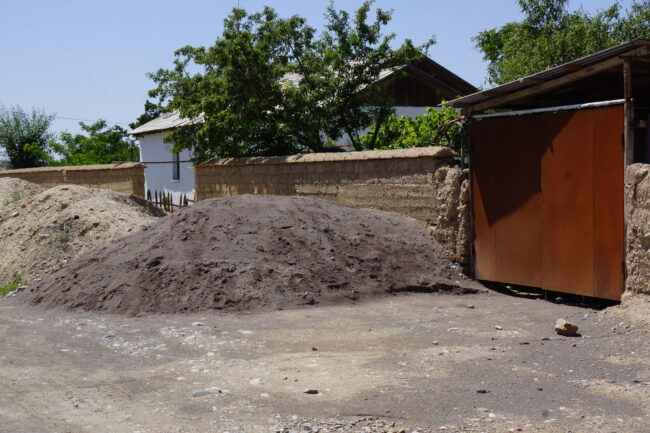

The local authorities were very supportive of the proposed risk reduction project. The project plan included: cleanup actions, education and medical monitoring of children.
Soil cleanup
The soil cleanup was started in October 2016. The cleanup was mainly conducted with heavy machinery and took about two weeks. Piles of highly contaminated toxic red sand (“kyzyl kum”) from the tailings were in almost every yard and along every street. All piles of kyzyl kum were removed from the streets. The playground areas and sport-grounds of the kindergarten, school and boarding school were also cleaned up.
In total about 400 metric tons of contaminated soil and sand were removed from the area. About 40 tons of clean soil and 45 tons of sand were brought in for landscaping at the sportyards and playgrounds. The new clean soil and sand were brought from the Village Chon, 20 km from Sovetskoe.


In 2017 the project team discovered that some contamination was still present in the town. Some people hid piles of kyzyl kum in their yards. Also there were many leftovers from the piles of red sand, which produced dust and continued to poison children. The project team worked with local authorities to organize another round of cleanup in 2017 to remove all remaining red sand from town.
Water Filters
The project team tested the drinking water and found out that it contained 66 ppb lead, which is much higher than the national standard of 10 ppb and added to the exposure of people to lead.
As part of the cleanup work special rechargeable ion-exchange water filters were installed in the school, kindergarten, and boarding school. The newly cleaned water was used for drinking and cooking, and not only in the schools, but also by other residents in the area.
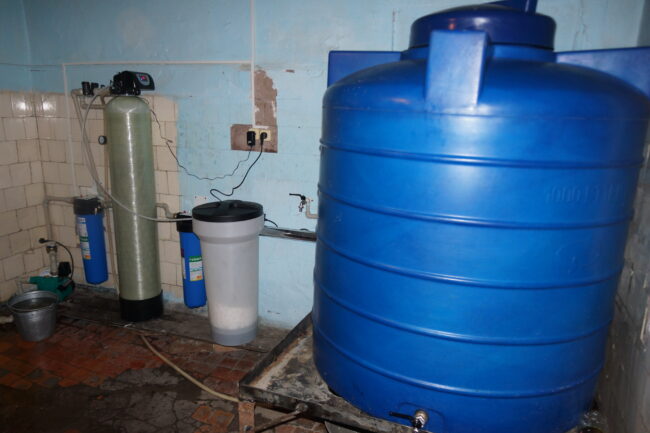
There was a noticeable difference in the water before and after filtering. The filters that were installed are not difficult to maintain. They look like removable cartridges. There is an extra filter in the kit. Each filter lasts for 1 million liters of water, so it will last a long time. One cartridge for recharging costs about $45.
The filtered water is collected in 1000 L tanks. Now the clean water is used for drinking and cooking, and not only in the schools, but also by other residents in the area.
After installation water samples were taken by the Kadamzhai Sanitary and Epidemiologic Service Laboratory in November 2016. The results indicated decrease of lead concentrations 2 times or more, the concentrations were still higher than standards of Kyrgyzstan (10 ppb) and in United States of America (15 ppb).
Second Environmental Assessment
To control the quality of the cleanup in October-November 2017 the team conducted another round of measurements of soil lead concentrations. In total 102 tests were made. The soil lead contamination has significantly decreased compared to 2016 (on the maps below), but in many places was still contaminated. The project team arranged with the local administration another round of soil cleanup to remove the remaining contamination.

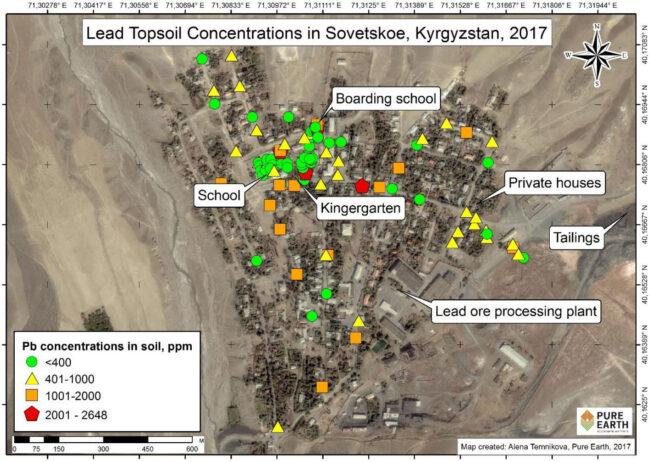
Education and Awareness

In November 2016, the educational and awareness expert Olga Kuzminova held education sessions with children, their parents, teachers, and nurses. She developed original communication materials including a special book for children with local ethnic heroes of fairy tales and a book “Lead and Children’s Health” for parents with information about lead health risks and ways to decrease exposure.
The project team held lectures for schoolchildren and educational games with small children in kindergarten and primary school. Almost all children in Sovetskoe town attended those educational sessions.
Most of the local residents responded very positively to the educational program. They brought their children for blood tests, read the printed materials and distributed those among neighbors. Teachers included the new educational games and lessons in their curriculums.


During the project 5 meetings with parents were held to explain the lead health risks and make recommendations how to decrease exposure of children to lead. Members of the project team, experts on lead contamination, local administration, doctors from Bishkek tried to explain and persuade the people that it is not acceptable to use red sand because it is toxic. It was very difficult and took years, but at the end people believed and stopped taking kyzyl kum from the tailings.

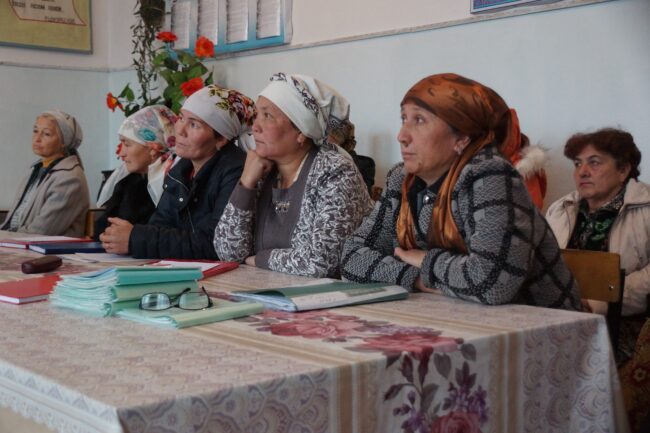
Medical Monitoring
It was very important to test children in order to investigate cases of lead poisoning and monitor exposure to lead.
Individual health risk from current exposure is assessed by measuring the concentration of lead in blood.
Until 2012, children were identified as having a blood lead “level of concern” if the test result was 10 or more micrograms per deciliter (µg/dL) of lead in blood. Center for Disease Control (CDC) of the United States is no longer using this term and is instead uses the blood lead reference (BLRV) value to identify children who have more lead in their blood than most children.
In 2012, the blood lead reference value (BLRV) for children was established to be 5 micrograms per deciliter (µg/dL).
In 2021 the new value of 3.5 μg/dL was adopted by CDC.
Presently World Health Organization (WHO) uses the values of 5 μg/dl as a reference level.
BLLs above 5-10 μg/dl but below 20 μg/dl are considered elevated and denote elevated risk of lead poisoning.
Levels above 20 μg/dl indicated even higher risk of lead poisoning leading to serious health problems. Blood lead levels of 45 μg/dl and higher may result in permanent brain damage and death, so immediate treatment is necessary.
Because of variation in individual susceptibility to lead poisoning, some children may have worse than average effects at lower blood lead concentrations and some may become sick only at higher blood lead levels.
In November 2016, the local medical personnel tested 258 people using the equipment (LeadCare II) and training provided by the project. According to the law of Kyrgyzstan Republic for each tested person an informed consent form and a personal information handling form were signed. For children, the forms were signed by their parents.
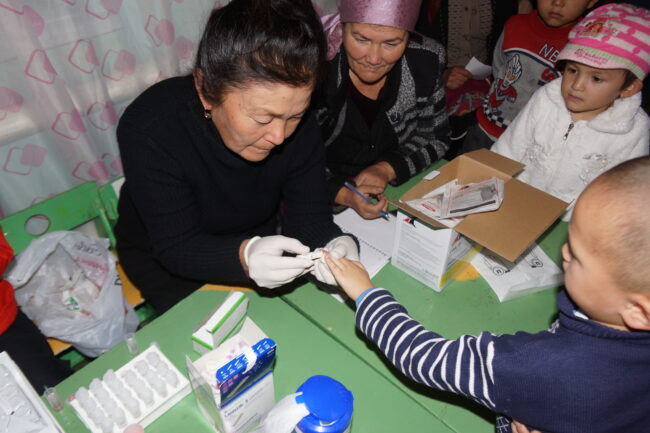
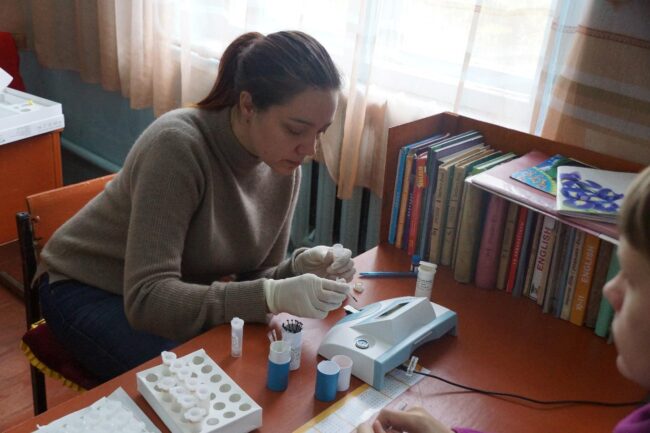
The result of the first medical monitoring showed that children at the age of 1-12 years were at the highest risk of lead poisoning: 88% of tested children of this age group had blood lead concentrations over 5 μg/dL; 5.5% of children had blood lead concentrations over 20 μg/dL.
The results of the blood lead testing were provided by the medical personnel individually to each family. Medical personnel supplied dietary supplement “Detoxal” to families with children with blood lead levels above 15 μg/dL for removing heavy metals from the body. The project team explained to people that dietary supplements would not cure lead poisoning may not help much if the exposure to lead remains high.
In November 2017 during the next round of medical monitoring 167 children were tested. The results did not show an improvement and indicated that the exposure of children to lead was still significant. In fact, this time 98% of children were above 5 μg/dL, and 20% were above 20 μg/dL. The high blood lead levels could be explained by the remaining contamination in town and the drought which increased the amount of dust.

In order to investigate pathways of exposure Petr together with Almaz Kyrgyzbaev and the head of the settlement Zamir Dosatov visited families with children that had BLLs above 20 μg/dl. In each location families had some remaining highly contaminated sand from tailings on their properties.
Obviously still many local residents did not believe that kyzyl kum was dangerous for their children’s health. Some people understood the risks and some did not. One family even brought additional volumes of red sand from tailings for future use in construction. This was done in violation of the decisions of the local administration and against legislation of Kyrgyzstan of handling hazardous waste materials.
Some residents still neglected basic hygiene rules, and did not properly supervise their children activities. For example, the boy with the highest concentration of lead in the blood (> 65.0 μg/dL) regularly visited the tailings where he took “sand baths”.
The project team, mainly specialist Olga Kuzminova conducted individual counseling of families that had children with high blood lead levels. She was able to talk to 23 families and explained lead health risks, ways to minimize exposure through better personal hygiene and urged everybody to refrain from bringing, storing and using the red sand from tailings for any purpose. After those meetings responsible residents of the village tried to influence ignorant people and explain the dangers of lead for children.
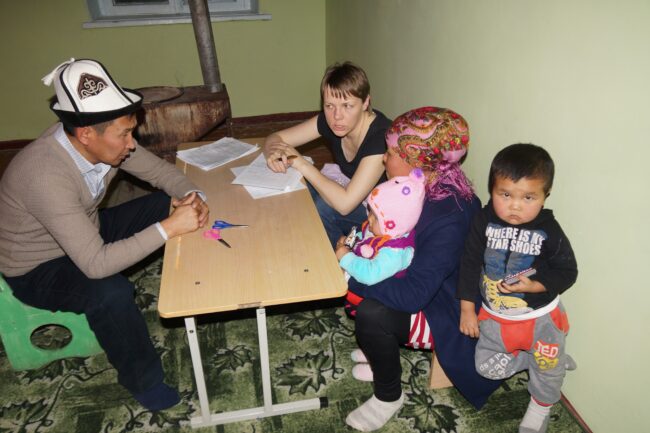

In November 2019 medical personnel from Bishkek assigned by the Ministry of Health conducted another round of blood lead monitoring and tested 142 children. The results showed that blood lead concentrations decreased for all children previously tested in 2017.
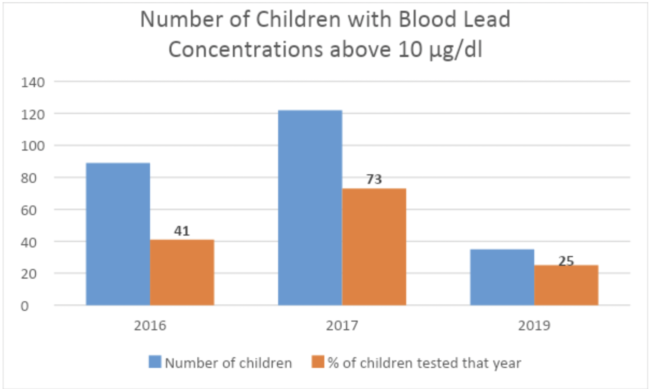
The mean blood lead level in 2017 was 13.25 μg/dl. In 2019 the geometric mean blood lead level was 7.49 μg/dl. The blood lead concentrations have decreased by 45% – almost 2 times. This indicates the success of the project.
The graph below summarizes the results of medical monitoring and shows the number of children at the highest risk – with blood lead concentrations over 10 μg/dl. The number has gradually decreased as well as percentage of such children. But it is still significant, which means that more efforts are needed to monitor the situation and educate people.
Indira Zhakipova, Project Coordinator: “After several years of our meetings, all the educational and informational work in Sovetskoe, our main achievement in my opinion is the change in the attitude and consciousness of people. At the beginning there was ignorance and denial of the problem and now there is sincere desire to solve it and change the future of their children. The knowledge that they received will be passed on to next generations of children.”
